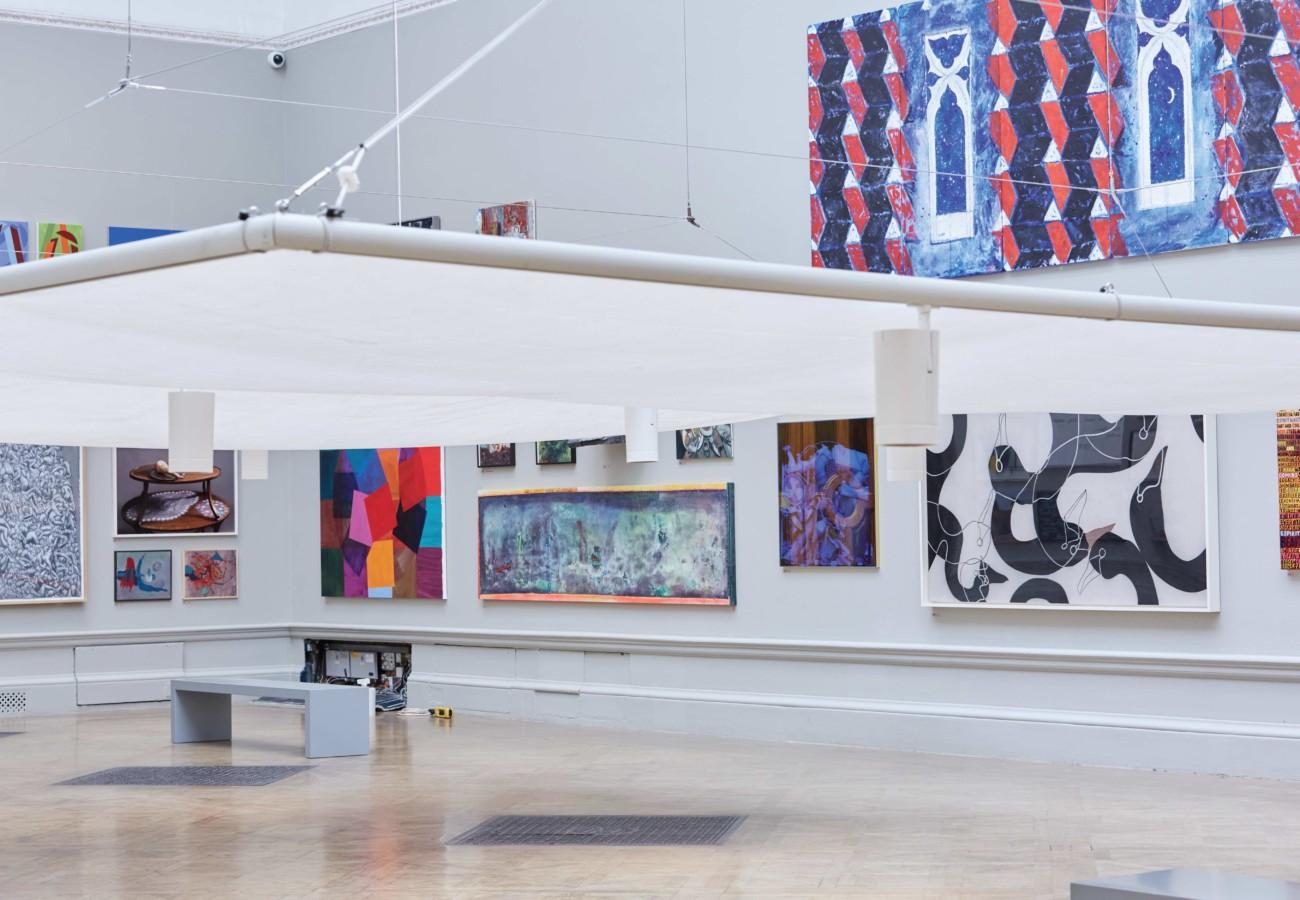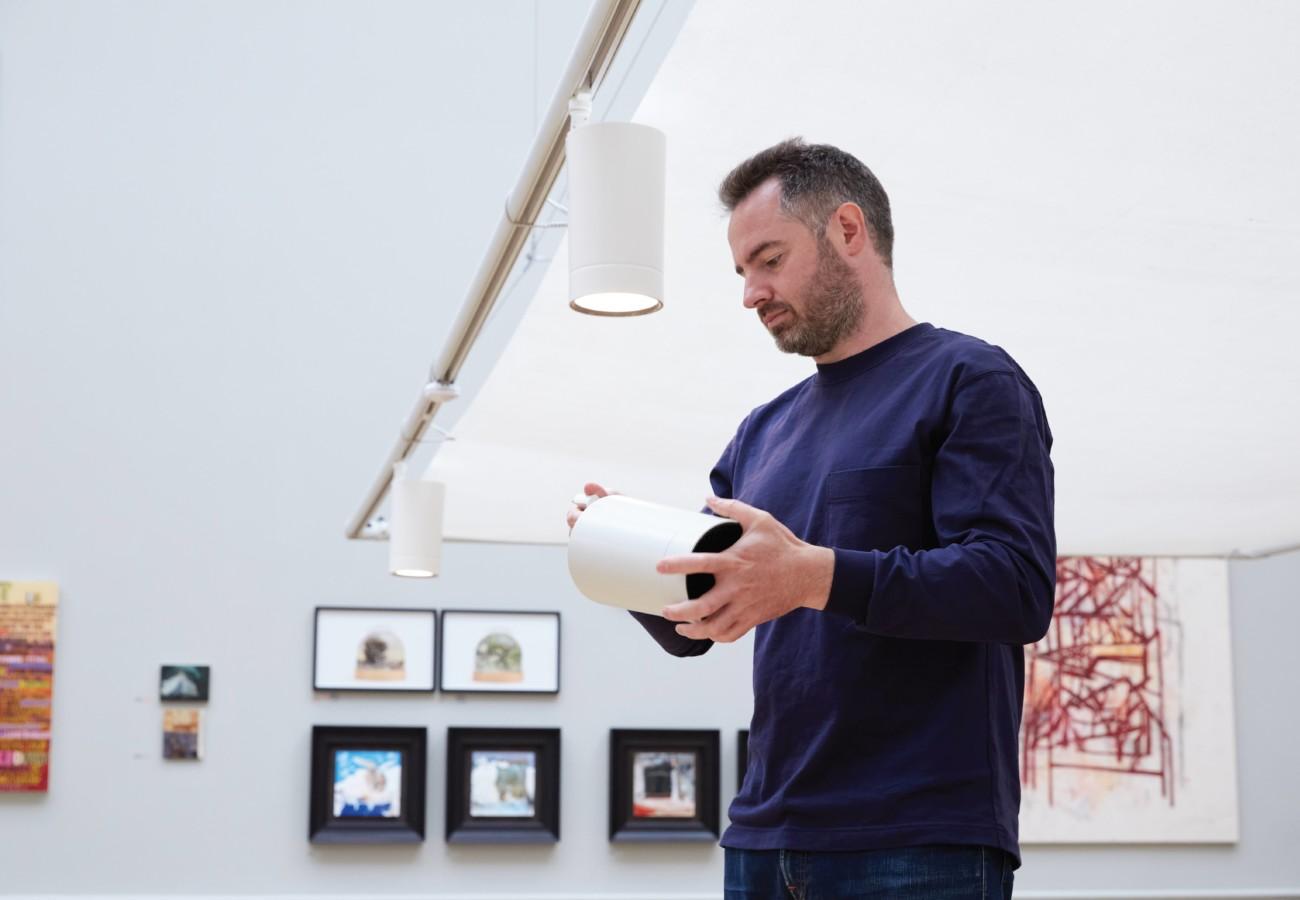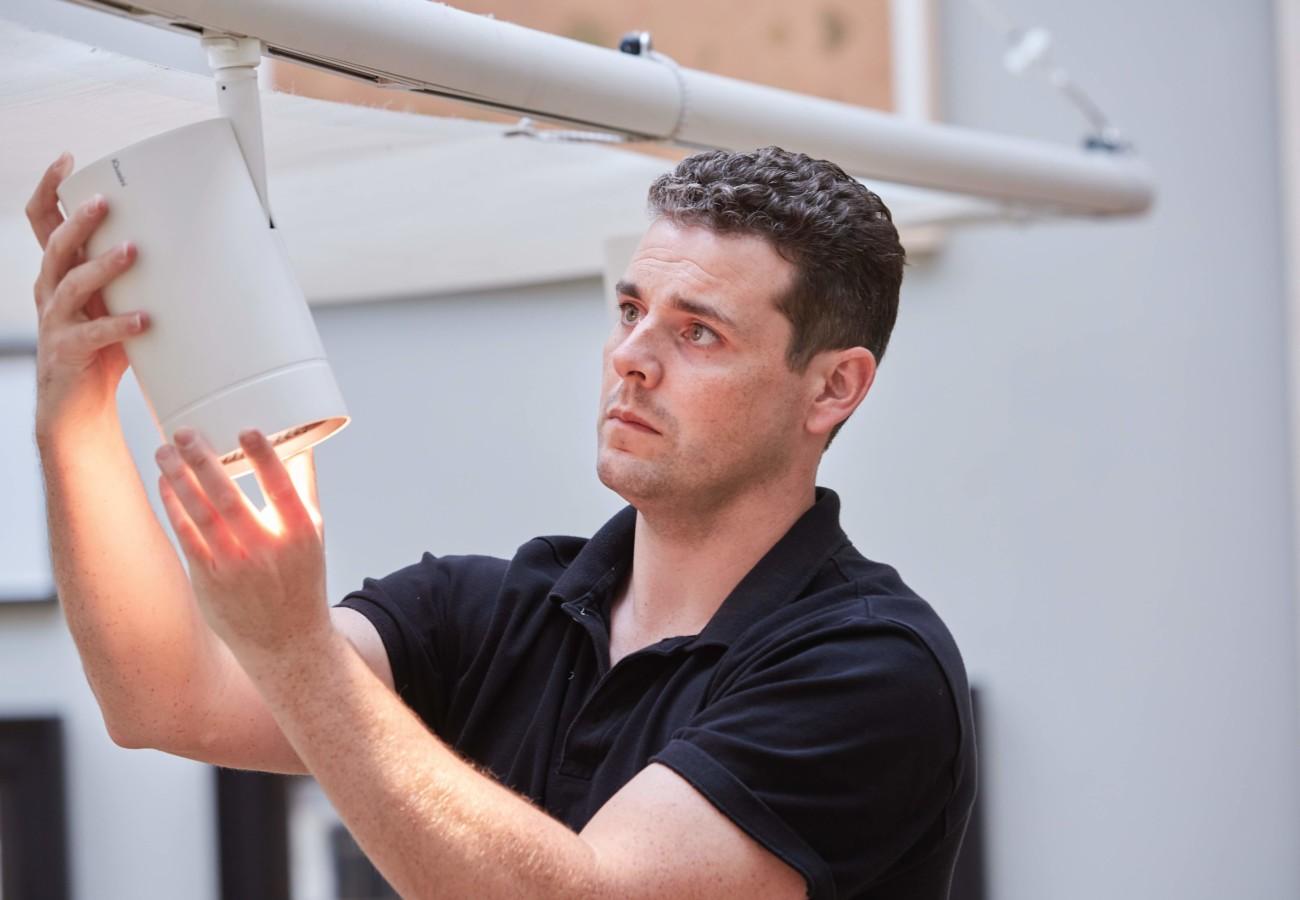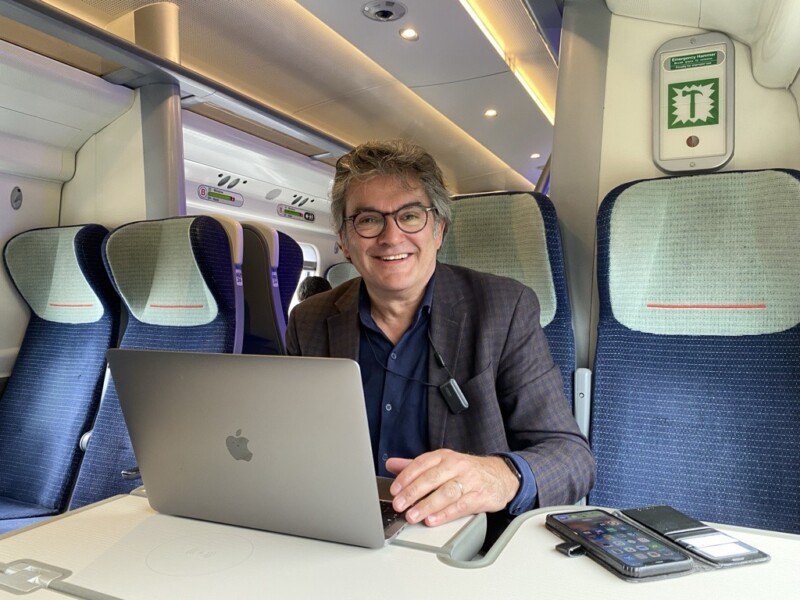Masters of Light: The Royal Academy of Arts on Lighting with Casambi

The Royal Academy has for over two centuries set the international standard for artistic excellence. Learn how smart lighting control has inspired avant-garde exhibition design at the institution.
A famed institution, the Royal Academy of Arts (RA) in London boasts a unique history that is rooted in its school, its vast archives, and its vibrant community comprising Academicians, families, friends, and anyone interested in exploring art and ideas.
The RA hosts world-class events year-round. Its public galleries and displays both reveal treasures from historic collections and provide a showcase for works by art students and today’s leading artists. From Constable, Gauguin, David Hockney, to Tracey Emin, an honor roll of artists representing the exceptional of every genre has filled the Royal Academy’s exhibition halls throughout the years.
Blockbuster exhibitions aside, a permanent fixture on the annual events calendar is the Royal Academy’s Summer Exhibition. This is the largest open-submission art exhibition in the world, where you will find over a thousand works on display each year in what becomes a major celebration of contemporary art and architecture. Spanning the central and main galleries, the Summer Exhibition comprises a rich mix of art mediums from paintings to sculpture to soundscapes and everything in between.

Behind the Scenes
In preparation for each exhibition, the RA’s halls are essentially razed to the ground and rebuilt to complement the chosen artworks. Site installation becomes a key task when curating such epic shows.
‘The lighting shouldn’t take away from the art – that’s the fundamental principle. But being able to provide clarity and to be able to see the art is the important thing. If you can notice the lighting, then we’re not doing our job’ says Benji Fox, Head of Audio Visual at the Royal Academy.
‘There’s always a physical challenge when installing even just the fixed physical space. The lights are really high in the gallery, and sometimes we have complex installations, which means access to lighting is sometimes difficult’ he adds.
Galleries are one of the more complex building types to illuminate. Because lighting can radically alter the way in which an artwork is perceived, the precision-tweaking of light temperature, color, positioning, and brightness becomes a Fine Art in and of itself. Staff and artist representation will communicate the parameters of a lighting design; from aesthetic intention to a setup that will protect a piece from, for example, harmful UV rays.
Then there’s the challenge of protecting a listed building. The RA including Burlington House & Galleries and the Royal Academy Schools Buildings are registered on the National Heritage List for England. Therefore, the exhibition team is constantly seeking solutions that minimize surface reconstruction and the pulling of wires to rig up new lighting systems.
Smarter lighting
Back in 2018, the RA updated its lighting stock to incorporate wireless communications. Lighting firm, iGuzzini was selected by lighting designers at ARUP London to provide its Palco LED spotlights, with drivers from eldoLED and lighting controls by Casambi.
‘Casambi provided to the Royal Academy a Bluetooth mesh technology that’s embedded inside the light fittings. In combination with the Bluetooth-enabled iOS/Android application, we provided them with the best possible lighting controls, and the most robust technology available for this type of application and this type of building’ says Stephen Jackson, Business Development Manager at Casambi.

Casambi’s technology provides lighting designers with the ability to wirelessly link devices together enabling the creation of customizable smart lighting networks that are configured and controlled using the Casambi App. This eliminates the need to climb up onto scaffolding to manually dim individual lights up or down. Lighting is controlled directly from a phone and any last-minute tweaks can be easily accommodated with the press of a button or two.
‘Final installations would take up to a week. We’d spend days and days worrying about lighting levels and now we can do it in seconds on our phone’ says Dan Gunning, AV Exhibitions Manager at the Royal Academy.
‘The control system allows us to walk into a space with an exhibition manager who can point to a picture and say ‘we want that one brighter’ and we can do it from the ground in seconds. Whereas before, we’d have to pull lots of equipment in, which caused a lot of hassle’ he adds.
In 2019, the RA held a big Anthony Gormley show, which was considered his most ambitious exhibition in more than ten years. Comprising a series of works that tested the scale and light of the RA’s architecture, Dan explains that the preparation phases were intense and very involved. At one point, there were talks of completely getting rid of all the lighting and having completely dimmed out spaces.
‘We were able to provide that on the fly. We could show Anthony how his work would look in one version versus the other. It wouldn’t have been so possible to do what he had requested without having individual control over the sections of the room. It’s great being able to do exactly what is asked without having to drag in equipment and pull fittings down’ explains Dan.
The Royal Academy has for over two centuries set the international standard for artistic excellence. Casambi is proud to bring a smart lighting solution into the fold to help bring new dimensions to their exhibition design: from color temperature, light colors, dimming, and individual tuning – all achieved wirelessly. All developed in the name of freeing up the RA to create their own wow factor time and time and time and time again.
Interested in learning more about Casambi? Drop us a note, and we’ll reach out to you:


